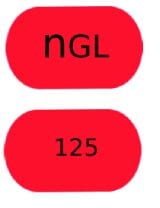Uses
Naloxegol is used to treat constipation caused by opiate (narcotic) pain medications in adults with chronic (ongoing) pain that is not caused by cancer. Naloxegol is in a class of medications called peripherally acting mu-opioid receptor antagonists. It works by protecting the bowel from the effects of opiate (narcotic) medications.
Side Effects Of Naloxegol
Naloxegol may cause side effects. Tell your doctor if any of these symptoms are severe or do not go away:
- diarrhea
- nausea
- gas
- stomach pain
- vomiting
- headache
- sweating
- chills
- anxiety
- irritability
- yawning
Some side effects can be serious. If you experience this symptom, stop taking naloxegol and call your doctor immediately :
- severe or worsening stomach pain and diarrhea
- rash; hives; swelling of the face, lips, throat, tongue, hands, or feet
- Naloxegol may cause other side effects. Call your doctor if you have any unusual problems while taking this medication.
Warnings & Precautions
Before taking naloxegol:
- tell your doctor and pharmacist if you are allergic to naloxegol, any other medications, or any of the ingredients in naloxegol tablets. Ask your pharmacist or check the Medication Guide for a list of the ingredients.
- tell your doctor if you are taking clarithromycin (Biaxin), itraconazole (Onmel, Sporanox), or ketoconazole (Nizoral). Your doctor will probably tell you not to take naloxegol if you are taking one or more of these medications.
- tell your doctor and pharmacist what other prescription and nonprescription medications, vitamins, nutritional supplements, you are taking or plan to take. Be sure to mention any of the following: carbamazepine (Tegretol); diltiazem (Cardizem, Dilacor, Tiazac); efavirenz (in Atripla, Sustiva); erythromycin (E.E.S., E-Mycin, Erythrocin); methadone (Dolophine, Methadose); other opiate antagonists such as methylnaltrexone (Relistor), naloxone (Evzio, in Bunavail, in Suboxone, in Zubsolv), or naltrexone (Revia, in Contrave, in Embeda, Vivitrol); rifampin (Rifadin, in Rifamate, Rifater, Rimactane); or verapamil (Calan, Covera, Verelan). Your doctor may need to change the doses of your medications or monitor you carefully for side effects. Many other medications may also interact with naloxegol, so be sure to tell your doctor about all the medications you are taking, even those that do not appear on this list.
- tell your doctor what herbal products you are taking, especially St. John’s Wort.
- tell your doctor if you have or have ever had an intestinal obstruction (a blockage in your intestine). Your doctor will probably tell you not to take naloxegol.
- tell your doctor if you have or have ever had stomach or bowel problems such as stomach ulcers (sores in the lining of the stomach), Crohn’s disease (a condition in which the body attacks the lining of the digestive tract, causing pain, diarrhea, weight loss, and fever), diverticulitis (inflamed bulges in the lining of the large intestine), cancer of the stomach or bowel, or Ogilvie’s syndrome (a condition in which there is a bulge in the bowel); or kidney or liver disease.
- tell your doctor if you are pregnant, plan to become pregnant, or are breastfeeding. If you become pregnant while taking naloxegol, call your doctor.
Dosage Of Naloxegol
Naloxegol comes as a tablet to take by mouth. It is usually taken once a day, at least 1 hour before or 2 hours after the first meal of the day. Take naloxegol at around the same time every day. Follow the directions on your prescription label carefully, and ask your doctor or pharmacist to explain any part you do not understand. Take naloxegol exactly as directed. Do not take more or less of it or take it more often than prescribed by your doctor.
If you are unable to swallow the tablets whole, crush the tablet to a powder and mix it in a glass with 4 ounces (120 mL) of water. Drink the mixture immediately. Then, refill the glass with 4 ounces (120 mL) of water, stir the contents, and drink the remaining mixture contents.
If you have a nasogastric (NG) tube, your doctor or pharmacist will explain how to prepare naloxegol tablets to give through a NG tube.
You should stop taking other laxative medications before you start taking naloxegol. Be sure to let your doctor know if naloxegol does not work for you after taking it for 3 days. Your doctor may tell you to take other laxative medication(s).
Tell your doctor if you stop taking opiate (narcotic) medications. Your doctor will probably tell you to stop taking naloxegol.
Other
Keep all appointments with your doctor.
Do not let anyone else take your medication. Ask your pharmacist any questions you have about refilling your prescription.
It is important for you to keep a written list of all of the prescription and nonprescription (over-the-counter) medicines you are taking, as well as any products such as vitamins, minerals, or other dietary supplements. You should bring this list with you each time you visit a doctor or if you are admitted to a hospital. It is also important information to carry with you in case of emergencies.
Source
All information has been provided courtesy of MedLinePlus from the National Library of Medicine and from the FDA.



